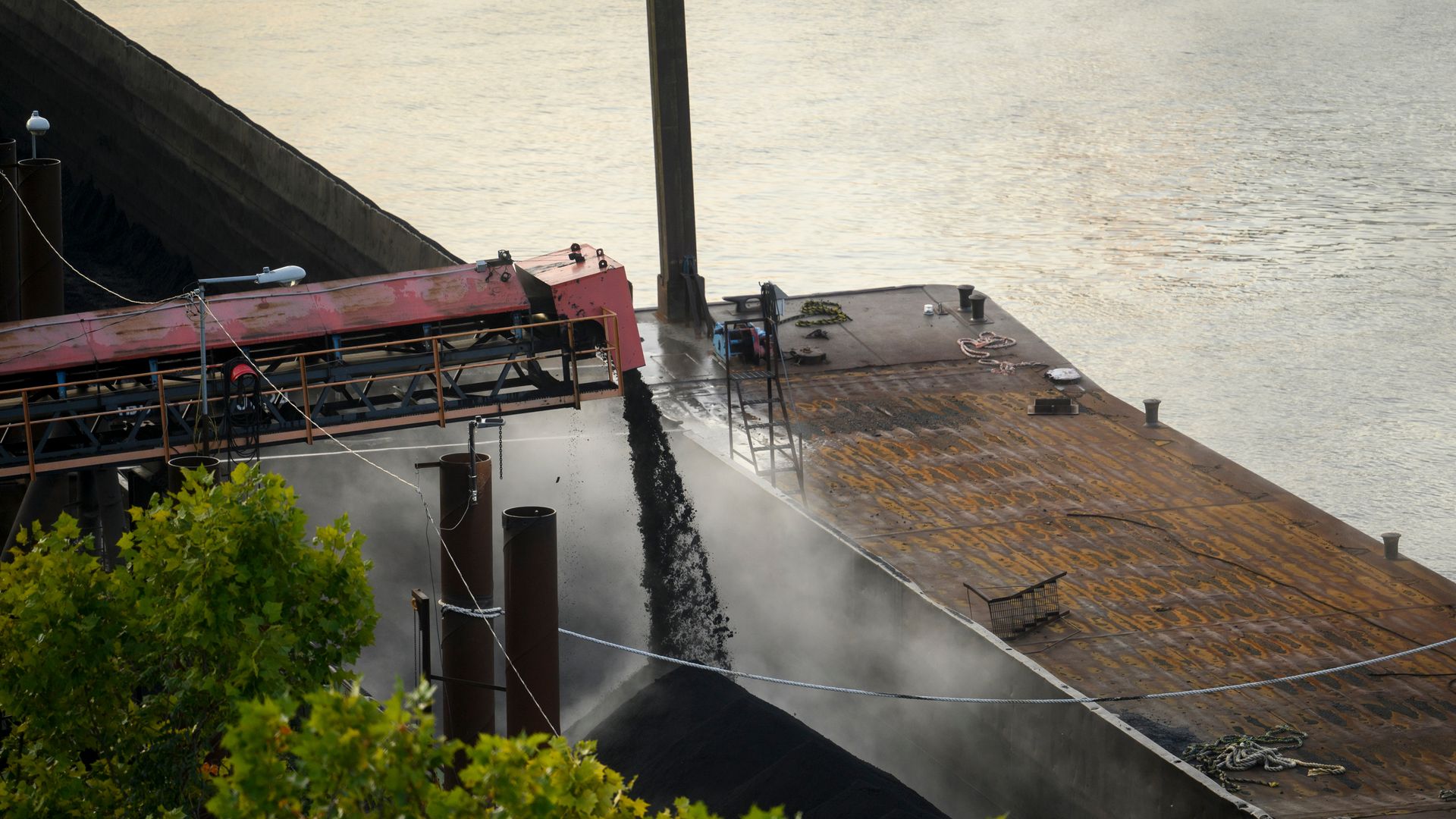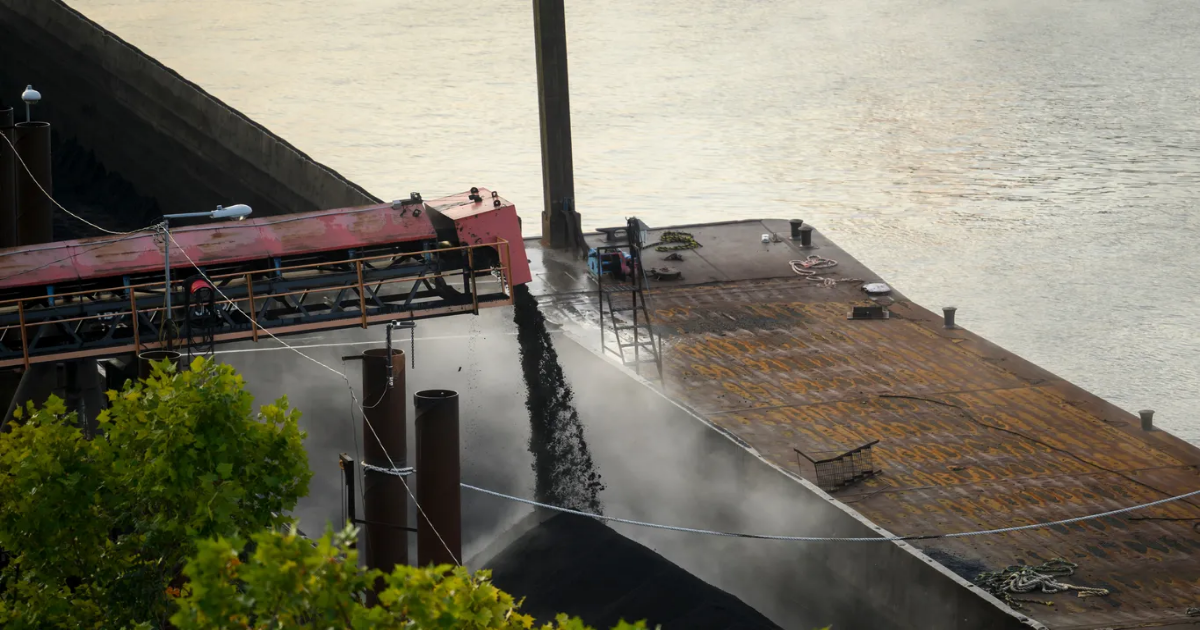 Coal is loaded onto a barge in Clairton, Pa. Photo: Justin Merriman/Bloomberg via Getty Images
Coal is loaded onto a barge in Clairton, Pa. Photo: Justin Merriman/Bloomberg via Getty Images
President Trump signed executive orders Tuesday that use Energy Department emergency authorities and a war-time law to boost the sagging coal industry.
Why it matters: The White House is seeking to lean on coal-fired power —which has been in a steady decline in the U.S. over the last 15 years — to feed rising energy demand driven by artificial intelligence.
What he’s saying: “We’re ending Joe Biden’s war on beautiful, clean coal,” Trump said flanked by coal miners in hard hats in the East Room of the White House.
- The orders slash “unnecessary regulations,” “rapidly expedite leases and coal mining on federal lands,” and “end the government bias against coal,” Trump said.
What’s inside: The text of the orders weren’t immediately available, but Trump said he is invoking the Defense Production Act to back the industry.
- Trump said he signed a separate order granting emergency authorities under the DOE to keep coal plants running.
- The agency can temporarily keep plants running, a rarely-used move that has historically occurred during extreme weather events.
- Trump directed the American Energy Dominance Council to designate coal as a “critical” mineral, a label that puts coal on par with minerals needed for defense and national security industries.
The big picture: The orders is a dramatic reversal from the Biden administration, which used the Cold War-era law in 2022 to boost production of electric heat pumps, transformers, solar panels and other products.
- Trump invoked the law last month to boost critical mineral production.
- Another piece aims to help agencies adopt “coal-related” exclusions from environmental reviews under the National Environmental Policy Act.
- He also directed the Justice Department to identify all state and local regulations that harm coal.
Reality check: Reversing the long-term decline in U.S. coal demand will be a tall task.
- While much in the orders focus on trying to ramp up U.S. coal mining, virtually no coal plants are being proposed.
- About 96% of the generator interconnection queue is wind, solar, and battery projects.
Zoom out: Energy Secretary Chris Wright touted coal as a way to meet AI electricity demand.
- “If we want to grow America’s electricity production meaningfully over the next five or ten years, we [have] got to stop closing coal plants,” Wright told CNBC’s “Money Movers.”
- And Wyoming GOP Sen. John Barrasso said on Senate floor: “The climate alarmists say coal is the energy of the past. They are misinformed. Clean coal can fuel the future. It is affordable. It is reliable. It is ready to go.”
The other side: Environmental groups panned the move as an outdated, polluting strategy that failed during his first administration.
- “What’s next, a mandate that Americans must commute by horse and buggy?” said Kit Kennedy, managing director for power at the Natural Resources Defense Council.
- “Coal plants are old and dirty, uncompetitive and unreliable. The Trump administration is stuck in the past, trying to make utility customers pay more for yesterday’s energy.”
Between the lines: Congressional Republicans have sought to prioritize connecting new fossil fuel plants to the grid.
- “I don’t think this order changes the facts that coal-fired power plants are old, expensive to run, and unlikely to operate very often or for many more years,” Rob Gramlich, founder and president of Grid Strategies LLC.
- “The plants will likely be kept on line longer than believed a few years ago due to an uptick in power demand,” he added. “But that is unrelated to this order, and doesn’t mean the plants will operate outside of peak periods to maintain reliability.”
Friction point: Mining companies believe they are in an “entirely new environment—really uncharted territory—when it comes to energy demand,” Ashley Burke, a spokeswoman for the National Mining Association, told Axios.
- “In sum, where some reporting suggests the administration is throwing a lifeline to coal, it’s actually coal that’s throwing a lifeline to the grid,” Burke said.
